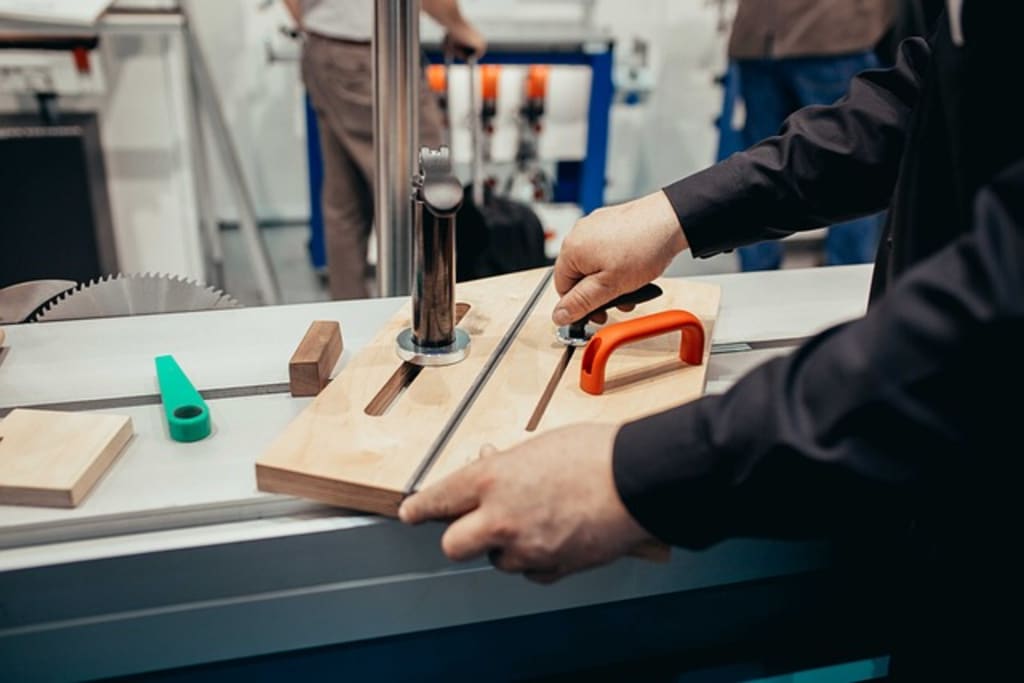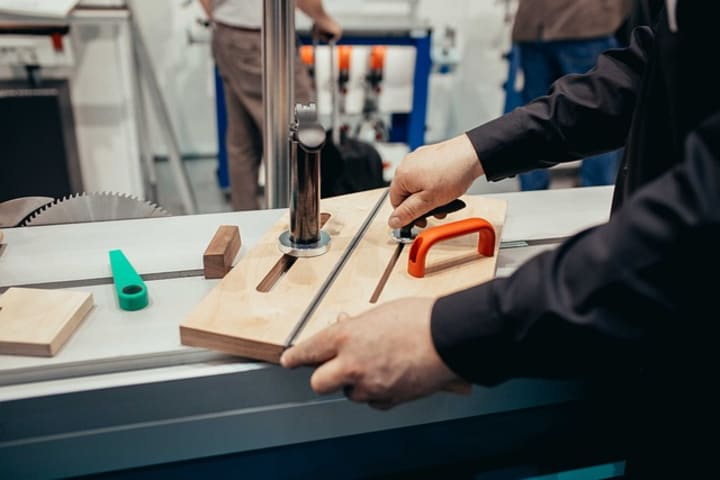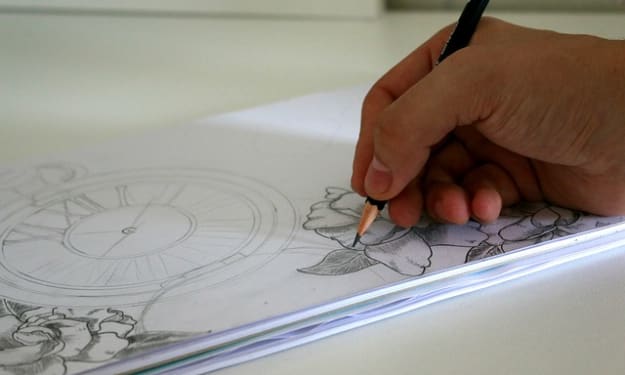
Have you ever marveled at the beauty of a handcrafted wooden table or felt the smooth, polished surface of a custom bookcase? There’s an undeniable allure to woodworking that can capture the imagination and ignite a passion within. If you’ve ever thought about diving into the world of creating something tangible and lasting with your own hands, our guide to woodworking for beginners with hand tools is your perfect starting point. Imagine the satisfaction of transforming raw timber into a beautiful piece of furniture, using nothing but your ingenuity and a few essential tools.
From selecting the right type of wood and understanding its grain, to mastering the basic yet integral hand tools that have stood the test of time, this journey embarks on the traditional craftsmanship that has been cherished for centuries. We’ll walk you through foundational woodworking lessons that are crafted specifically for novices, ensuring a seamless and inspiring introduction. You’ll discover purposeful projects tailored for beginners, each designed to build your confidence and hone your skills. Whether you aim to create simple home décor or aspire to more complex wood projects, this ultimate guide will serve as your trusted companion in the mesmerizing world of woodworking for beginners. Ready to start? Let’s carve out your new hobby, step by step!
Selecting the Right Type of Wood for Your Projects
When it comes to woodworking, one of the most important decisions you’ll make is selecting the right type of wood for your projects. The type of wood you choose will greatly impact the final outcome and durability of your piece. There are several factors to consider when making this decision.
Firstly, you need to consider the appearance you want to achieve. Different types of wood have distinct colors, grains, and textures. Some woods, like oak or mahogany, have a rich and luxurious look, while others, like pine or cedar, have a more rustic and natural feel. Think about the overall aesthetic you’re aiming for and choose a wood that complements it.
Secondly, consider the strength and durability of the wood. If you’re creating furniture or other items that will be subjected to heavy use or weight-bearing, you’ll want a strong and sturdy wood like oak or maple. On the other hand, if you’re working on decorative pieces or smaller projects, softer woods like pine or cherry may be more suitable.
Lastly, take into account your budget and availability. Some types of wood can be quite expensive due to their rarity or popularity. If cost is a concern for you as a beginner, consider starting with more affordable options like pine or birch until you gain more experience.
Understanding Wood Grain and Its Impact on Your Work
Wood grain refers to the pattern that is created by the growth rings in a tree’s trunk. Understanding wood grain is crucial in woodworking as it can greatly affect how your finished piece looks and behaves.
The two main types of grain patterns are straight grain and irregular grain. Straight grain is characterized by parallel lines running along the length of the board and is generally easier to work with. It is commonly found in woods like maple or oak. Irregular grain, on the other hand, has a more unpredictable pattern with swirls or waves. Woods like mahogany or walnut often exhibit this type of grain.
When working with wood, it’s important to consider how the grain will affect your project. For example, if you’re creating a tabletop, you’ll want to choose boards with straight grain to ensure stability and prevent warping. On the other hand, if you’re making a decorative box, irregular grain can add visual interest and uniqueness to your piece.
Additionally, understanding wood grain can help you determine the best direction for cutting and sanding. Working against the grain can result in tear-out or splintering, while working with the grain will produce smoother and cleaner cuts.
Essential Hand Tools for Beginners in Woodworking
As a beginner in woodworking, it’s important to start with a basic set of hand tools that will allow you to complete a wide range of projects. While power tools can be convenient and efficient, mastering hand tools is essential for developing fundamental skills and precision craftsmanship.
Here are some essential hand tools every beginner should have in their woodworking workshop:
Claw Hammer: A versatile tool used for driving nails and removing them when needed.
Screwdrivers: Both flathead and Phillips screwdrivers are necessary for assembling and disassembling wooden pieces.
Tape Measure: Accurate measurements are crucial in woodworking, so invest in a quality tape measure.
Miter Saw: This saw is used for making precise angled cuts in wood.
Coping Saw: Ideal for intricate and curved cuts, a coping saw is a must-have for detailed work.
Chisels: Chisels are used for carving and shaping wood, and they come in various sizes for different tasks.
Block Plane: A block plane is handy for smoothing rough surfaces and chamfering edges.
Clamps: Clamps are essential for holding pieces together while the glue dries or when making precise cuts.
These tools will provide you with a solid foundation to start your woodworking journey. As you gain more experience and tackle more complex projects, you can gradually expand your tool collection to include additional specialized tools.
woodworking for beginners
Introduction to Basic Woodworking Techniques: Sawing and Sanding
Sawing and sanding are two fundamental woodworking techniques that every beginner should master. These techniques lay the groundwork for creating precise cuts and smooth finishes in your projects.
Sawing:
Sawing involves cutting through wood using a saw. There are several types of saws that serve different purposes in woodworking:
Crosscut Saw: This saw is used to make cuts across the grain of the wood.
Rip Saw: A rip saw is designed for cutting along the grain of the wood.
Coping Saw: As mentioned earlier, a coping saw is ideal for intricate and curved cuts.
To ensure accurate cuts, it’s important to mark your measurements on the wood before sawing. Use a pencil or marking knife to create a clear line that guides your saw. Take your time and use steady, controlled movements as you cut through the wood.
Sanding:
Sanding is the process of smoothing the surface of wood using sandpaper or a sanding block. It helps remove rough edges, imperfections, and uneven surfaces, resulting in a polished and professional finish.
Start with coarse-grit sandpaper to remove any major imperfections or roughness. As you progress, switch to finer-grit sandpaper for a smoother finish. Sand in the direction of the wood grain to avoid scratches or damage to the surface.
Remember to wear protective gear like safety goggles and a dust mask when sawing and sanding to protect yourself from flying debris and fine dust particles.
Crafting Your First Woodworking Project: A Simple Step Stool
Now that you have a good understanding of wood selection, grain patterns, essential hand tools, and basic woodworking techniques, it’s time to put your knowledge into practice by crafting your first woodworking project: a simple step stool.
A step stool is an ideal beginner project as it allows you to apply your newly acquired skills while creating a practical piece for everyday use. Here’s a step-by-step guide on how to make a basic step stool:
Gather Materials: You’ll need two pieces of 1×8 lumber for the sides, one piece of 1×10 lumber for the steps, screws or nails for assembly, and wood glue.
Measure and Cut: Measure and mark the desired height and width for your step stool on the lumber. Use a saw to cut out the pieces according to your measurements.
Assemble Sides: Apply wood glue along one edge of each side piece and attach them to the steps. Secure with screws or nails.
Attach Steps: Apply wood glue to the top of each side piece and position the steps on top. Secure with screws or nails.
Sand and Finish: Sand the entire step stool to smooth any rough edges or surfaces. Apply a finish of your choice, such as paint or stain, to protect the wood and enhance its appearance.
With this simple project, you’ll gain hands-on experience in measuring, cutting, assembling, and finishing wood. As you complete more projects, you’ll continue to refine your skills and tackle more complex designs.
Advancing Your Skills: Intermediate Woodworking Projects to Challenge Yourself
Once you’ve mastered the basics of woodworking for beginners with hand tools, it’s time to challenge yourself with intermediate projects that push your skills further. These projects will allow you to explore new techniques and expand your creativity.
Here are some ideas for intermediate woodworking projects:
Cutting Board: Create a beautiful cutting board by combining different types of wood in an eye-catching pattern.
Jewelry Box: Craft an elegant jewelry box with intricate joinery techniques like dovetails or finger joints.
Coffee Table: Build a sturdy coffee table using advanced joinery methods like mortise and tenon joints.
Bookshelf: Design and construct a custom bookshelf that showcases your woodworking skills while providing functional storage space.
The key to advancing your skills is taking on projects that gradually introduce new techniques without overwhelming you. Each project should build upon what you’ve learned and challenge you to grow as a woodworker.
Conclusion: Embracing the Journey of Woodworking as a Beginner
Woodworking is a rewarding and fulfilling hobby that allows you to create beautiful and functional pieces with your own hands. As a beginner, it’s important to start with the right foundation by selecting the right type of wood, understanding wood grain, and acquiring essential hand tools.
By mastering basic woodworking techniques like sawing and sanding, you’ll be able to confidently tackle your first projects. Starting with simple designs like a step stool will help you gain experience and build your skills.
As you progress, don’t be afraid to challenge yourself with intermediate projects that push your boundaries. The more you practice and explore woodworking, the more confident and skilled you’ll become.
Remember, woodworking is not just about the final product; it’s about embracing the journey of learning and growing as a woodworker. So grab your tools, unleash your creativity, and let woodworking become your new passion!
What Is Woodworking?
Woodworking is an ancient craft that involves shaping wood into various objects or structures using tools and techniques. It encompasses a wide range of skills, from simple joinery to intricate carving. Woodworking can be both functional, creating furniture or utensils, or purely artistic in nature.
Carpentry vs. Woodworking
Carpentry is often used interchangeably with woodworking but there are some differences between the two. Carpentry focuses on constructing structures such as buildings or frameworks using wood as the primary material. It involves skills like framing walls, installing doors/windows, and building stairs.
On the other hand, woodworking encompasses a broader scope that includes carpentry but also extends to creating furniture, decorative objects, and artistic pieces. Woodworking often involves more intricate joinery and finer craftsmanship.
How can I start woodworking at home?
Starting woodworking at home is easier than you might think. Here are some steps to get you started:
Educate Yourself: Read books, watch online tutorials, or take classes to learn the basics of woodworking. Familiarize yourself with different tools, techniques, and safety practices.
Set Up a Workspace: Dedicate a space in your home for woodworking. It can be a garage, basement, or even a small corner in your apartment. Make sure you have enough room for your tools and materials.
Acquire Essential Tools: Start with the essential hand tools mentioned earlier in this guide. As you progress, you can gradually invest in power tools that suit your projects.
Select Your First Project: Choose a beginner-friendly project that aligns with your interests and skill level. A simple step stool or cutting board is a great place to start.
Gather Materials: Purchase the necessary wood and other materials for your project. Consider using affordable options like pine or birch as you’re starting out.
Practice Safety Measures: Always prioritize safety when working with tools and machinery. Wear protective gear like safety goggles and gloves, and follow proper procedures to avoid accidents.
Remember that practice makes perfect, so don’t be discouraged if your first few projects don’t turn out exactly as planned. Embrace mistakes as learning opportunities and keep honing your skills through practice.
What is the easiest way to get started in woodworking if you have no experience? What should you buy first and what can you do with it?
If you have no experience in woodworking, the easiest way to get started is by focusing on hand tools. They are more affordable, require less space, and allow you to develop essential skills before diving into power tools.
The first tool you should consider buying is a good quality claw hammer. It’s a versatile tool that can be used for driving nails and removing them when needed. With a hammer, you can start practicing basic joinery techniques like butt joints or miter joints.
Once you have a hammer, consider adding a set of screwdrivers to your toolkit. Both flathead and Phillips screwdrivers will come in handy for assembling and disassembling wooden pieces.
With just these two tools, you can start building simple projects like small boxes or picture frames. As your skills progress, gradually invest in additional hand tools like chisels, saws, and clamps to expand your capabilities.
What are the essential woodworking tools every beginner should have in their workshop?
Every beginner woodworker should have the following essential tools in their workshop:
Claw Hammer: Used for driving nails and removing them when needed.Screwdrivers: Both flathead and Phillips screwdrivers are necessary for assembling and disassembling wooden pieces.Tape Measure: Accurate measurements are crucial in woodworking, so invest in a quality tape measure.Miter Saw: This saw is used for making precise angled cuts in wood.Coping Saw: Ideal for intricate and curved cuts, a coping saw is a must-have for detailed work.Chisels: Chisels are used for carving and shaping wood, and they come in various sizes for different tasks.Block Plane: A block plane is handy for smoothing rough surfaces and chamfering edges.Clamps: Clamps are essential for holding pieces together while the glue dries or when making precise cuts.
These tools will provide you with a solid foundation to start your woodworking journey. As you gain more experience and tackle more complex projects, you can gradually expand your tool collection to include additional specialized tools.
What are some good first woodworking projects for a beginner with limited tools and space?
If you have limited tools and space, there are still plenty of great first woodworking projects that you can tackle. Here are some ideas:
Cutting Board: Create a simple cutting board using a single piece of wood or multiple pieces glued together. It’s functional, practical, and doesn’t require many tools.
Picture Frame: Build a picture frame using miter joints or butt joints. It’s a small project that allows you to practice joinery techniques without needing extensive space or tools.
Coat Rack: Construct a coat rack with hooks using basic woodworking techniques like drilling holes and attaching hardware. It’s useful and doesn’t take up much space.
Serving Tray: Make a serving tray using plywood or solid wood boards. It’s an opportunity to practice cutting straight lines and assembling pieces with screws or nails.
The key is to choose projects that align with your available tools and space. Start small and gradually work your way up to more complex projects as you acquire more tools and expand your workspace.
Where or how can I start learning woodworking techniques for beginners?
There are several ways you can start learning woodworking techniques as a beginner:
Books: Visit your local library or bookstore and look for beginner-friendly woodworking books. They often provide step-by-step instructions, illustrations, and tips to help you learn the basics.
Online Tutorials: There are numerous websites, YouTube channels, and online courses dedicated to teaching woodworking. Look for tutorials specifically designed for beginners and follow along with the instructions.
Woodworking Classes: Check if there are any woodworking classes or workshops offered in your area. Learning from an experienced instructor in a hands-on environment can greatly accelerate your progress.
Join Woodworking Communities: Online forums or social media groups dedicated to woodworking are great places to connect with fellow enthusiasts. You can ask questions, seek advice, and learn from their experiences.
The most important thing is to practice what you learn. Start with simple projects that allow you to apply the techniques you’ve learned, and gradually challenge yourself with more complex designs as your skills improve.
Can I teach myself woodworking?
Absolutely! Many woodworkers are self-taught and have honed their skills through practice, experimentation, and continuous learning. With the abundance of resources available today, it’s entirely possible to teach yourself woodworking.
The key is to start with the basics and gradually build upon your knowledge and skills. Begin by familiarizing yourself with essential tools, safety practices, and basic techniques. As you gain confidence, tackle small projects that allow you to practice and refine your skills.
Remember to be patient with yourself and embrace mistakes as learning opportunities. Woodworking is a journey of continuous improvement, and every project you complete will contribute to your growth as a woodworker.
What is the best beginner woodworking wood?
Choosing the best wood for beginners depends on several factors, including availability, budget, and the type of project you’re working on. Here are some popular choices for beginner-friendly woods:
Pine: Pine is a softwood that is readily available and affordable. It’s easy to work with and forgiving for beginners.
Birch: Birch is another affordable option that offers good stability and durability. It has a light color with subtle grain patterns.
Poplar: Poplar is a hardwood that is relatively inexpensive compared to other hardwoods. It’s easy to work with and has a smooth texture.

These woods are commonly used in beginner projects due to their availability, affordability, and ease of use. They provide a solid foundation for learning woodworking techniques without breaking the bank.
As you gain more experience, you can start exploring other types of wood like oak, maple, or cherry which offer different characteristics in terms of appearance and durability.
In conclusion, woodworking for beginners with hand tools opens up a world of creativity and craftsmanship. By selecting the right type of wood, understanding its grain patterns, acquiring essential hand tools, mastering basic techniques like sawing and sanding, crafting simple projects like step stools or cutting boards, advancing your skills through intermediate projects, embracing the journey of learning woodworking, and seeking knowledge through books, online tutorials, classes, or woodworking communities, you can embark on a fulfilling and rewarding woodworking journey. Remember to start small, practice regularly, and enjoy the process of transforming raw timber into beautiful creations. Happy woodworking!
About the Creator
Marcus
The Answer Finder under theanswerfinder.com
Enjoyed the story? Support the Creator.
Subscribe for free to receive all their stories in your feed. You could also pledge your support or give them a one-off tip, letting them know you appreciate their work.





Comments
There are no comments for this story
Be the first to respond and start the conversation.